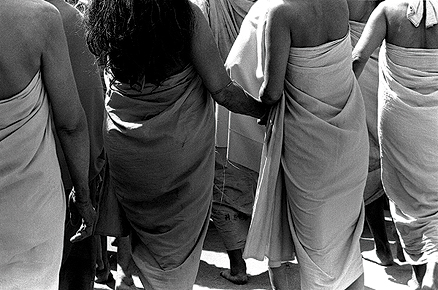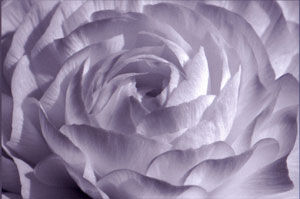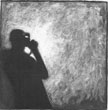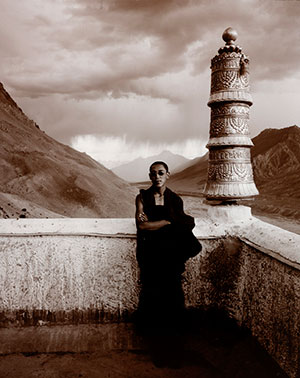Ganga’s Daughters: Meetings with Women Ascetics, 1992-2002
Sheba Chhachhi, an installation artist, photographer, activist, and writer based in New Delhi, India, was on campus for the month of February 2005 in a visit organized by the Women’s Studies department and funded by the Townsend Departmental Residency Program. Created in collaboration with women renunciates and ecstatics in various parts of India, the photographs in this exhibition seek to share the unusual lives of contemporary women sadhus—from the almost naked beatific to the power-dressing female mahant.
Don't Look Back: Photographs of Eastern Europe
After the collapse of communism, more than 200,000 young Moldovan women have been trafficked and sold abroad. Poverty and desperation are the prevailing factors in this modern-day flesh trade. Chakarova’s photographs examine the living conditions in the villages of the poorest country in Europe.
Ann Chamberlain explains that “Islands of San Francisco is an exercise in mapping the city as a series of islands, imagining what is isolated, revealed, concealed, or adrift. Perhaps this is an exercise in mythologies of place—archipelagos or constellations, sacred mountains, gated enclaves, nature preserves, or even penal colonies—all linked by common species, activities, or interests. By mapping I hope to reveal some of these layers and associations, both the pinnacles and the underbelly of the city.”
Actors in Death: Commemorative Prints from the World of Kabuki
In Actors in Death: Commemorative Prints from the World of Kabuki, the Townsend Center presents memorial prints of Kabuki actors, woodblock prints from the collection of Stanford professor Albert Dien that date from the late 18th century through the early 20th century and the heyday of Kabuki theater in Japan.
Taking Pictures Seriously: The Art of Perception in Photography
Stephen Palmer, Professor of Psychology and Cognitive Science at UC Berkeley, explores the connections between visual perception—the focus of his research and teaching—and his recent work in color photography.
The Townsend Center, in conjunction with the BAM show Gene(sis), presented a suite of 22 film stills from Organum, the computer graphics animation film by Greg Niemeyer, Chris Chafe, and Christine Liu. The stills present a linear narrative on which the complete film is based (although the film itself is non-linear)
Recent scholarship suggests that contemporary photographers are returning to photography’s origins, resurrecting obsolete photographic technologies in their work. Such artists are “looking forward by looking backward.” This exhibition explores the relevance of obsolete technologies to contemporary photographic practice.
This exhibit features photographs taken by Linda Connor in 2002 in Turkey and India, including eight images of the Bedrock Church in Cappadocia.
Amanda Hughen, MFA candidate in the Department of Art Practice, explores the boundaries between the natural and the synthetic through patterns formed from geometric shapes. She explores specific dichotomies—the intuitive and the rational, the mass-produced and the unique, precision and imperfection, chaos and order—with particular attention to the thin line that separates these seemingly opposite states.
Aero Foto: Surveying the Bay Through Time with George E. Russell
The Stillhere collaborative of Robin Grossinger and Christine Reed uses the captivating images of George Russell, an under-recognized 20th-century aerial explorer, to continue their investigation of the rapid transformation of the physical landscape of the Bay Area. In this exhibit, selections of Russell’s work, rescued from a Fresno chicken coop, are accompanied by a series of intricate graphic stories combining photographs, old maps, and fragmentary biographic details.









